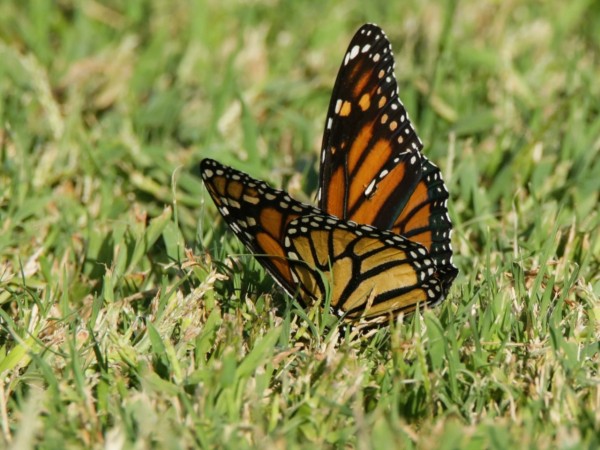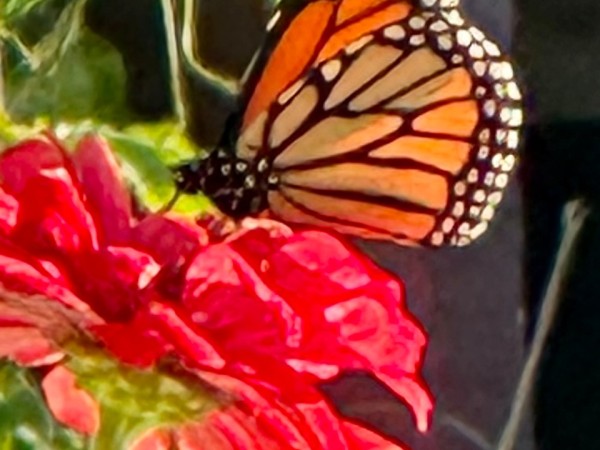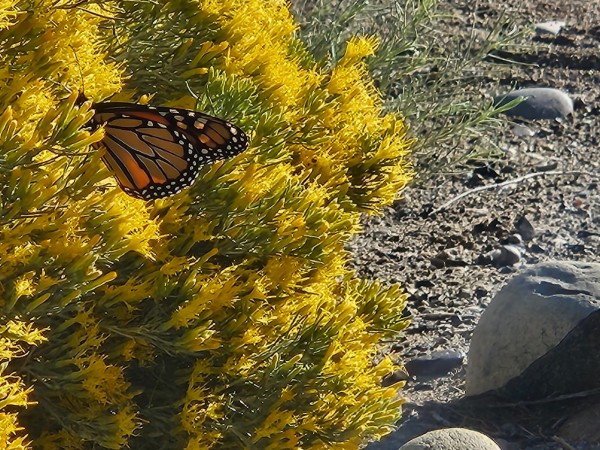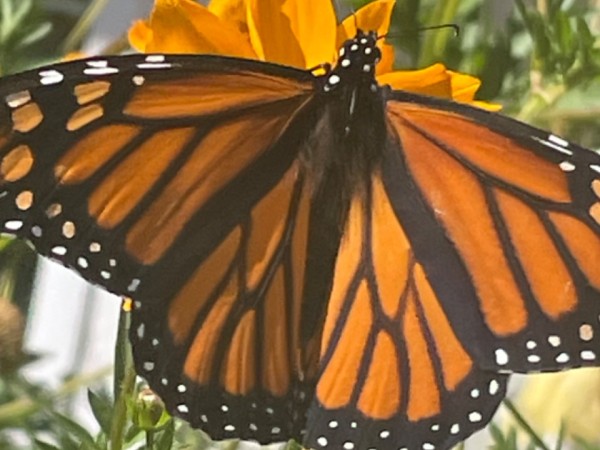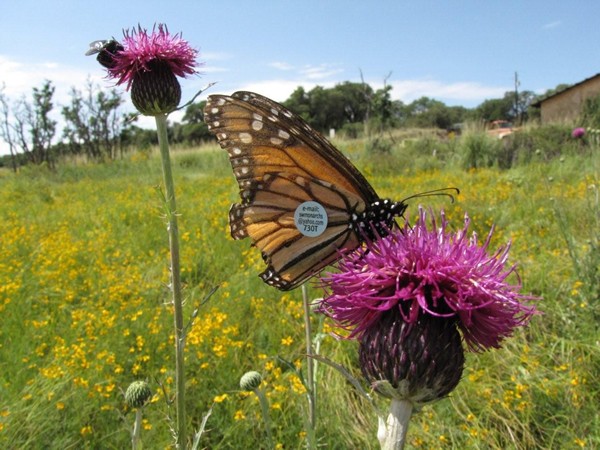Letter From Gail Morris: Western Monarch Fall 2023 Report #3
published: 10/10/2023
Western Monarchs Update
First monarchs are arriving at the northernmost California overwintering sites! Late sightings are also appearing in the Northwest states, an unusual but exciting encounter for monarchs lagging in their journey. Monarchs are appearing across all the western states as they race to their finish for their winter haven.
Monarch Sightings
Here are samples of recent monarch sightings. Be sure to check out our live map of monarch sightings as they are reported to see where they are now near you!
Dorothee has been looking for monarchs for several weeks. Finally, today she found one, the first of this Fall season, in Lake Havasu, Arizona, “about 9:30 a.m.”
Jack in Roseville, California, spotted his first monarch in his backyard on October 7. “Landed on Zinnia in our backyard around 9:30am. Also fed on Verbena Bonariensis. In yard 5-10 minutes. Was chased by Gulf Fritillary, then Monarch chased it. First time I've ever seen one land in our yard(15-20 years). We've had milkweed in our front yard for about two years, but have yet to see Monarch hang out there.”
Joni, in Pasco, Washington, saw one monarch on October 6. “Nectaring on Grey Rabbitbrush blossoms. Sunny, 65 degrees.”
In Grand Junction, Colorado, Marilyn was surprised to see one monarch on October 6. “I am amazed to see a monarch in October! This is unusual. It was on my butterfly bush with three family witnesses standing there in awe. The butterfly was in good shape, no ragged wings, no faded colors.”
Bob found a monarch in Ukiah, California on October 4. “Monarch seen feeding on Cosmos.”
Special Note: “We’re still seeing evidence of breeding monarchs!” During the migration many places mostly see nonbreeding monarchs on their annual journey to an overwintering destination they have never themselves visited before. But in the Southwest, there are more monarch larvae reported this year. If the temperatures stay warm as they have so far this season, it’s possible they will mature and migrate until they lose the urge to do so in early December. Let’s watch closely what will unfold this season. Keep in mind there are native evergreen milkweeds in the Southwest such as Asclepias subulata, so it isn’t only nonnative milkweeds.
News from the Field
They’re here! Diana Magor sends in her first report from Lighthouse Fields in Santa Cruz, California:
“Today, Oct 7, 2023, I surveyed monarchs at Lighthouse Field in Santa Cruz and observed at least 50 and probably more like 60 there. The photos attached are of 2 clusters deep inside the Monterey Cypress Grove on a hot, sunny morning. In the first photo, I count 21 monarchs, (3 on the far left. I hadn’t noticed these until I reviewed the photos, and there may have been more there) and all I can distinguish are males. Although there were many flyers in and outside the grove, I estimate approximately 60 monarchs present at Lighthouse Field today. I’m attaching a photo of 1 very worn and torn monarch clinging to the boundary wire of the sanctuary. It’s apparently come a long way!
The temps hit 95°F yesterday and it appears that some of the monarchs are taking refuge from the heat in the cooler inner part of the Cypress grove. I found none on the Eucalyptus or Cypress on the outer edges of the grove, but several were flying over the nearby ice plants. Many females are laying many eggs on the milkweeds in my home Waystation and rear garden, with an apparent preference for Asclepias curassavica and A. cordifolia.”
Thank you to Diana Magor for her report witnessing the first early arrivals to the coast.
Needed: Your Reports
Where are monarchs in the West? We need your real-time findings of monarchs in flight or in any life stage. Provide as much information as you can such as weather conditions (it’s okay to estimate), wing condition (excellent to frayed and everything in between), monarch gender, or flight direction. We look forward to your reports.
Gail Morris is the Coordinator of the Southwest Monarch Study (www.swmonarchs.org), a Monarch Watch Conservation Specialist, and the Vice President of the Monarch Butterfly Fund, the Central Arizona Butterfly Association, and the Western Monarch Advocates. The Western Monarch Population News is based on comments provided to Gail Morris. We hope to increase the number of sightings and therefore photos and comments entered into Journey North. We rely on the volunteers who communicate regularly with Gail and who agree to participate in our effort to increase awareness of the population of western monarchs. You can reach her at gail@swmonarchs.org

